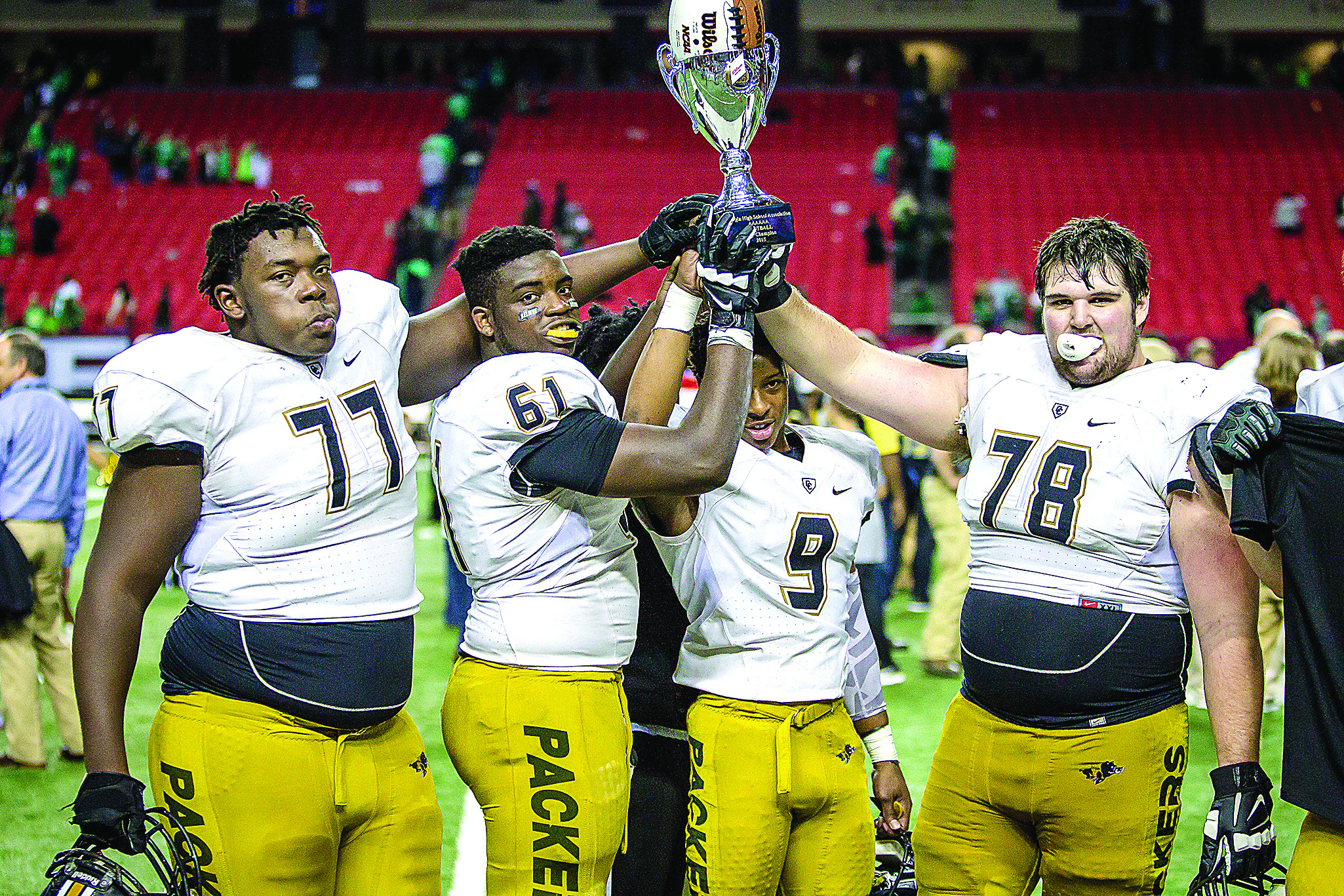Another favorite time of the year!
Published 3:54 pm Saturday, September 22, 2018

- Eddie Seagle is a Sustainability Associate, Golf Environment Organization (Scotland), Agronomist and Horticulturalist, CSI: Seagle (Consulting Services International), Professor Emeritus and Honorary Alumnus (Abraham Baldwin Agricultural College), Distinguished Professor for Teaching and Learning (University System of Georgia) and Short Term Missionary (Heritage Church, Moultrie). Direct inquiries to csi_seagle@yahoo.com.
“October is a symphony of permanence and change.” Bonaro W. Overstreet. “My favorite color is October.” Vali Mada. “Life starts all over again when it gets crisp in the fall.” F. Scott Fitzgerald.
The aftermath of Hurricane Florence requires much rescue, assistance and clean-up in the stricken areas. The season has changed (on the calendar) and autumn is here, September is almost history and October is on the horizon with its colorful and climatic appeal soon to follow. The temps will soon be resembling those of the typical fall season.
Trending
And with the fall season comes more seasonal activity in your landscape. From new color schemes and curb appeal to increased activities and simple evenings sitting around the outdoor fireplace or wood burner, it can be another favorite time of the year. And, yes, don’t forget the football and baseball (as the men of October play for another pennant) games being played. Wow, it’s a fun time of the year!
Transitioning into fall is also time to work with your plants, change the landscape, and prepare the site for the new planting of herbaceous and woody plant materials. As we transition into October, your landscape focus should include the following items as they pertain to your individual needs.
Birds: Make the necessary preparations to help our feathered friends in the hunt for food this fall and winter season. Start by cleaning existing feeders and placing them in strategic locations for bird activity and window viewing which will provide much enjoyment from the comfort of your home. Replace bird food as necessary to insure an adequate supply for their survival. Also left undisturbed, the dry seed heads on many of your plants is another great way to supply fall and winter food for birds.
Composting: The easiest way to dispose of fallen leaves and expired plants is to dig them directly into the garden soil. To speed the rate of decomposition, sprinkle the material with urea, sodium nitrate, or other fast release nitrogen fertilizer before working the debris into the soil. Turn the soil every two to three weeks until decomposition is complete. The soil will be ready for use in the spring. Composting bins can also be very helpful as you plan your composting needs.
Houseplants: Plan to bring houseplants indoors (that summered outdoors) as the temps begin to cool down. After months of humidity and sufficient light outdoors, they must now adapt to the drier air and lower light levels inside the home. Proper acclimatization is critical in that the plants should be slowly transitioned from the outdoors to a one- to two-week holding area (carport or garage) before placement indoors. Before leaving their outdoor environment, check each plant for problems such as insect or disease activity, fertilizer deficiencies, and general plant health. The problem is easier addressed outdoors rather than indoors later. Also, clean exterior of each pot thoroughly along sides and bottom using garden hose and scrub brush. Use pruning shears to snip any root activity exiting the pot. If the plant is root- or pot-bound, then transplant to next larger pot size while outdoors.
Irrigation: Don’t forget the water! The weather may be cooler, but your landscape can still be exposed to long spans of dry, sunny weather. It’s particularly important that all newly planted perennials, groundcovers, trees and shrubs don’t dry out. The strategy is to water deeply (not a light surface application) to establish self-sufficient plants. Plants use less water during cooler weather.
Trending
Leaves: As fall color approaches, we will all enjoy the leaf color and arrangements designed by nature. However, as fall color plays its course, the leaves will eventually drop from the trees and accumulate all over the ground on the lawn and bed areas alike. We must take measures to clean up the leaf debri and properly dispose of our collection or recycle through composting. A small price to pay for the beauty and curb appeal of deciduous tree leaves in the fall season.
Overseeding: Overseeding with cool season turgrasses is the practice to achieve winter color on your warm season lawn during host dormancy. While it is cosmetically beneficial, it also offers some competitiveness which may reduce the density of your host turfgrass come spring. Upon evaluation of turfgrass texture and density, bermudagrass is more overseeding-friendly than other lawn grasses. Centipedegrass, St. Augustinegrass, zoysia, and paspalums are not as overseeding-friendly. It is very important to understand the end result on your host turfgrass come spring and next season. Overseeding of bermudagrass can be effectively achieved using mixtures or blends of ryegrass and other cool season grasses between mid-October and late November. An alternate approach to overseeding for winter coloration of your lawn is the application of color pigments that match the natural color of your host turfgrass. These pigments will last throughout the season with one to two applications and are turfgrass- and environmentally-friendly.
Perennials: Fall is the best season to plant such perennials as iris, daylilies, and Shasta daisies. If established perennials have become overcrowded, dig and divide them. Complete planting and transplanting as early as possible to allow plants enough time to become established before cold weather arrives. First killing frost is usually about November 15, but varies each year (even into December or later).
Planting: Planted now, container grown and B&B (balled and burlapped) trees and shrubs will have plenty of time to become established before cold weather actually begins. Next spring, the plants will get off to a strong start, as the roots will be established and plant energy can be spent on leaf and flower production.
Root pruning: Young trees and shrubs to be moved this winter should be root pruned now. Insert a spade into the ground in a circular pattern around the plant (18- to 24-inches from the trunk pending size of transplant) with minimal disturbance to the rootstock soil. This severs the roots and encourages new feeder roots which minimizes suffering and stress during the transplanting process. Maintain optimal cultural practices, especially sufficient watering.
Think in terms of native and sustainable plants in the landscape. May this bit of awareness spark your desire to learn and ask questions, encourage you to further apply your gained knowledge, and bring you to further realize that environmental stewardship and sustainability should be at the foundation of all your home landscape activities.
Keep your hanging baskets and potted plants refreshed with water and food. Remember to feed and water the songbirds, and to provide your pets the care they need (protect them from this extreme summer heat and humidity). Also, be on lookout for children playing and bicyclists riding along the streets and roadways throughout our communities. And remember to safely share the road with motorcycles. Drive alert and arrive alive. Don’t drive distracted or impaired, and don’t text while driving. Buckle up (click-it or ticket). Let’s keep everyone safe and secure! Help those in need and the homeless every chance you get. And, as you receive good deeds, always pay them forward. Pay for a stranger’s meal the next time you are eating out!
“Do nothing out of selfish ambition or vain conceit, but in humility consider others better than yourselves. Each of you should look not only to your own interests, but also to the interest of others.” Philippians 2:3-4. “May the grace of the Lord Jesus Christ, and the love of God, and the fellowship of the Holy Spirit be with you all.” 2 Corinthians 13:14.
Seagle is a Sustainability Associate, Golf Environment Organization (Scotland), Agronomist and Horticulturalist, CSI: Seagle (Consulting Services International), Professor Emeritus and Honorary Alumnus (Abraham Baldwin Agricultural College), Distinguished Professor for Teaching and Learning (University System of Georgia) and Short Term Missionary (Heritage Church, Moultrie). Direct inquiries to csi_seagle@yahoo.com.





